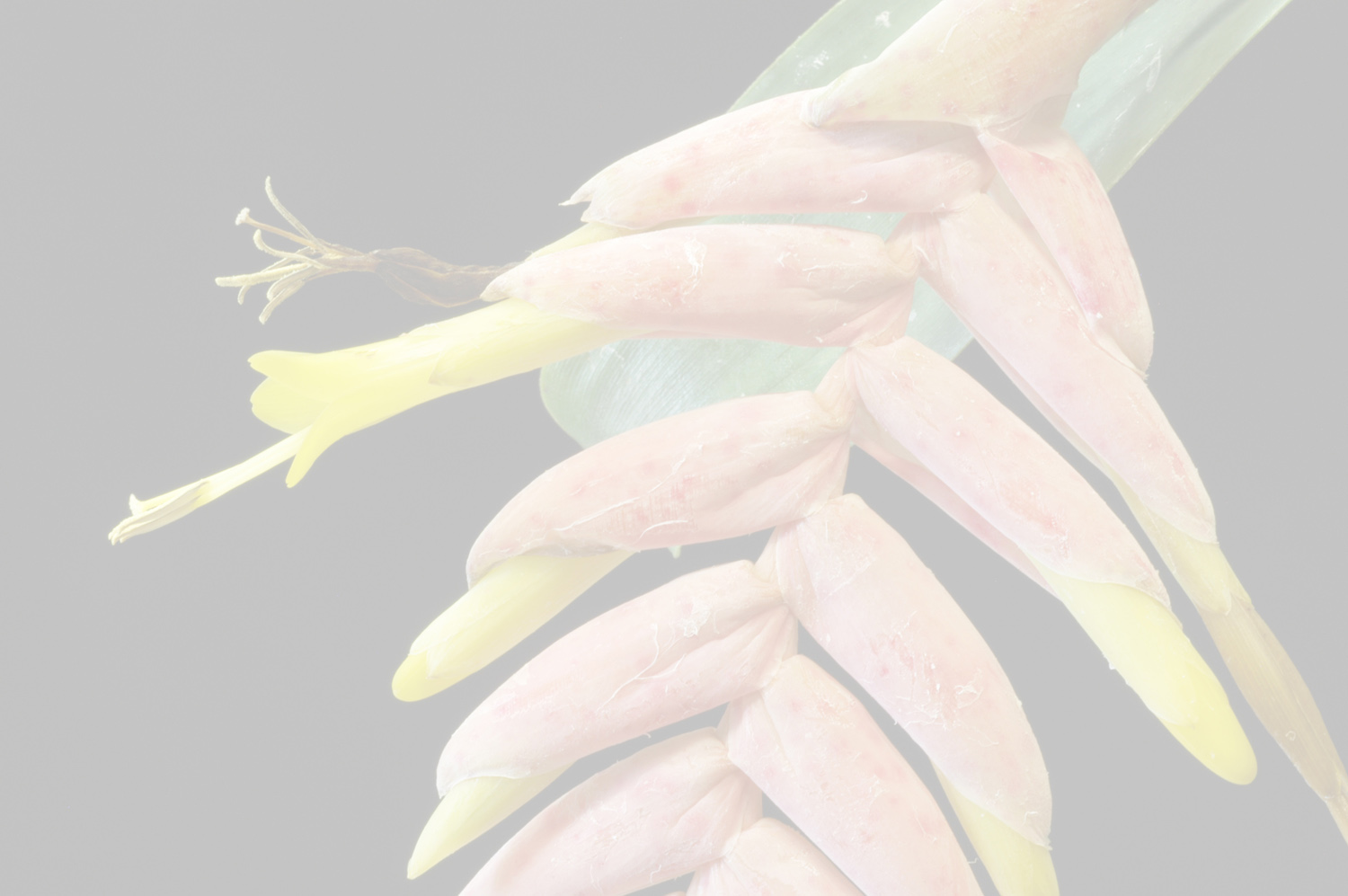Vriesea alta E.Morren ex Baker emend. Mez
Literature references:
*move your mouse pointer over the page numbers to see comment
Comments:
- Comment from J R Grant in TSP91 (1995)p14
This species is very doubtful. It is likely synonymous with earlier named taxon in Tillandsia, Allardtia, Werauhia or Guzmania. (Trop Subtrop Pflan 91:14.1995)
- Comment from J Grant 15/10/2000
Yes....you are right. BUT.
Alcantarea alta is a problem. The type specimen is a painting in the Morren collection at Kew which I have a photograph of. It is clearly an Alcantarea, and Elton thinks it may even be the same as his A. edmundoi. I haven't worked on this in a while though. A little paper could be done for Bromelia, but the problem is the photo. It would be nice to publish it, but remember the damn limies (Kew) are so obsessed with such jewels of the crown that the whole process is nearly beyond the impossible.
So, while V. alta is in fact an Alcantarea, Harry Luther is well to keep it in Vriesea at the moment since there isn't any other place for it yet. Maybe I should get cracking on this!
Jason
From Baker 1889
302. T. ALTA Baker.
Vriesea alta E. Morren (M.D.)
Whole plant 8-10 ft. high. Leaves about 20, densely rosulate, lorate, 3 ft. long, 2½-3 in. broad at the middle, flexible, subglabrous, green on both sides, narrowed to the point. Peduncle stout, erect, twice as long as the leaves; bract-leaves with lanceolate or ovate spreading tips: Panicle rhomboid, 8 ft. long; branches laxly-flowered, erecto-patent, ascending, the lower 1½-2 ft. long, sterile in the lower third; branch-bracts small, ovate ; flower-bracts ovate, 1¼-1½ in. long. Calyx green, ½ in. longer than the bract. Petal blade lanceolate, whitish, as long as the calyx. Stamens as long as the petals:
Habitat. Chiriqui, imported by Van Houtte in 1879. Flowered in 1885. Near T. regina.
Butcher’s comments. How did it get from Brazil to Panama
Mez 1935 Treated it as a synonym of Vriesea panniculata (L) Mez. now Tillandsia paniculata in the Pseudalcantarea subgenus of Tillandsia. Why did Smith resurrect this species? There is no reference to appendages on the petals. AND the Dominican Republic is a lot closer to Panama than Brazil and would have been on the same trade route.
Description in Baker 1889 is very close to that of T. paniculata (Butchers notes)
- Morren was the first to mention the name “Tillandsia (Vriesia) alta”, in his unpublished iconography located in the Kew libraries (Gouda et al. [cont. updated]). Baker (1889) did not accept the genus Vriesea and treated this taxon as Tillandsia alta (É.Morren) Baker, citing Vriesea alta É.Morren as a synonym. Mez (1934) positioned this taxon as a synonym of Vriesea paniculata (L.) Mez (1934: 406) in Vriesea subg. Alcantarea. This synonym was not followed by Smith & Downs (1977). We found a photo (by L.B. Smith), in the GH herbarium, of a specimen (associated with Morren, Fig. 10C) containing three complete flowers, probably the material used by Morren to illustrate the species. Grant (1995a) elevated Alcantarea to genus rank and excluded V. alta from Alcantarea (É.Morren ex Mez) Harms (1929: 802). Then, Versieux & Wanderley (2010) presented the lectotype (É.Morren plate, in Kew) and discussed the possible affinity with the A. extensa group. This taxon has a compound inflorescence, distichous flowers with long and strongly recurved petals, and stamens radially spreading and exserted. This set of characteristics could lead us to place this taxon or in Alcantarea (petal appendages and developed apical coma of the seeds, occurring in eastern Brazil) or Pseudalcantarea (Mez) Barfuss et al. (2016: 42) (petals without appendages and seeds with a short or absent apical coma, occurring from Mexico to Nicaragua). However, there are no specimens other than the three separate flowers found by Lyman Smith in Liège to verify these characters. On a recent visit (2019) to the Liège herbarium, we could not find this specimen. The lack of a diagnostic description useful to distinguish it at the genus level, precludes a discussion at this time, so this taxon will be maintained in Vriesea until additional material becomes available. It is very unlikely that this taxon belongs to Vriesea, especially because of the floral morphology with long and strongly recurved petals, such as observed in Alcantarea and Pseudalcantarea, whereas Vriesea has tubular, campanulate or rarely urceolate corollas, and petals with the apex straight to recurved. Therefore, we could consider three scenarios: 1) This taxon belongs to Pseudoalcantarea, slightly expanding the southern boundary of the genus; 2) This taxon belongs to Alcantarea, creating a disjunct distribution for the genus (at present, the northern border is at the Brazilian state of Bahia); or 3) The description of this taxon included a mislabeling of localities, which may have occurred during the cultivation at the Liège Botanical Garden. —See Kessous & Costa 2023 p. 96

